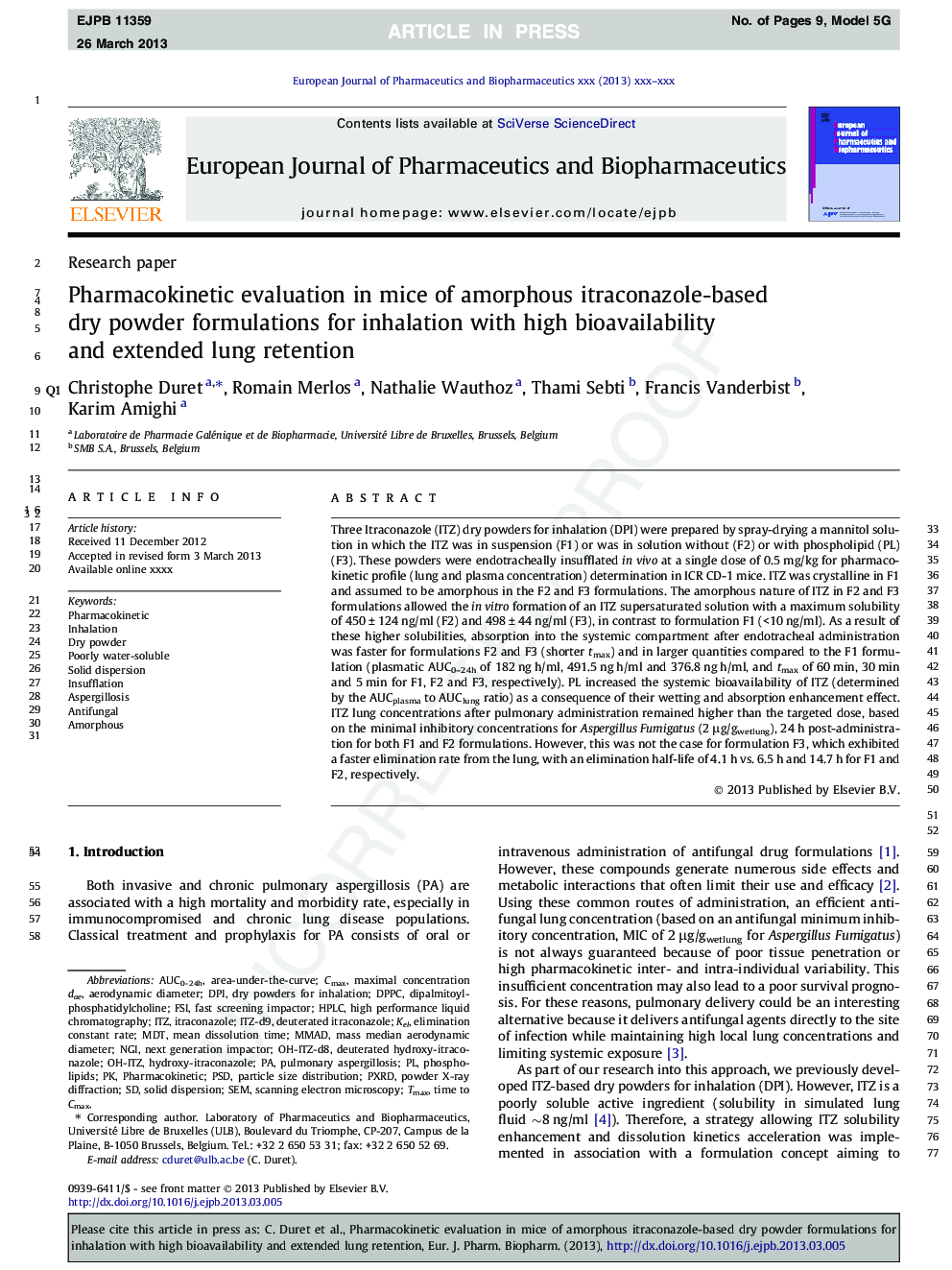| Article ID | Journal | Published Year | Pages | File Type |
|---|---|---|---|---|
| 8414247 | European Journal of Pharmaceutics and Biopharmaceutics | 2014 | 9 Pages |
Abstract
Three Itraconazole (ITZ) dry powders for inhalation (DPI) were prepared by spray-drying a mannitol solution in which the ITZ was in suspension (F1) or was in solution without (F2) or with phospholipid (PL) (F3). These powders were endotracheally insufflated in vivo at a single dose of 0.5 mg/kg for pharmacokinetic profile (lung and plasma concentration) determination in ICR CD-1 mice. ITZ was crystalline in F1 and assumed to be amorphous in the F2 and F3 formulations. F2 and F3 formulations allowed the in vitro formation of an ITZ supersaturated solution with a maximum solubility of 450 ± 124 ng/ml (F2) and 498 ± 44 ng/ml (F3), in contrast to formulation F1 (<10 ng/ml). As a result of these higher solubilities, absorption into the systemic compartment after endotracheal administration was faster for formulations F2 and F3 (shorter tmax) and in larger quantities compared to the F1 formulation (plasmatic AUC0-24h of 182 ng h/ml, 491.5 ng h/ml and 376.8 ng h/ml, and tmax of 60 min, 30 min and 5 min for F1, F2 and F3, respectively). PL increased the systemic bioavailability of ITZ (determined by the AUCplasma to AUClung ratio) as a consequence of their wetting and absorption enhancement effect. ITZ lung concentrations after pulmonary administration remained higher than the targeted dose, based on the minimal inhibitory concentrations for Aspergillus fumigatus (2 μg/glung), 24 h post-administration for both F1 and F2 formulations. However, this was not the case for formulation F3, which exhibited a faster elimination rate from the lung, with an elimination half-life of 4.1 h vs. 6.5 h and 14.7 h for F1 and F2, respectively.
Keywords
Related Topics
Life Sciences
Biochemistry, Genetics and Molecular Biology
Biotechnology
Authors
Christophe Duret, Romain Merlos, Nathalie Wauthoz, Thami Sebti, Francis Vanderbist, Karim Amighi,
